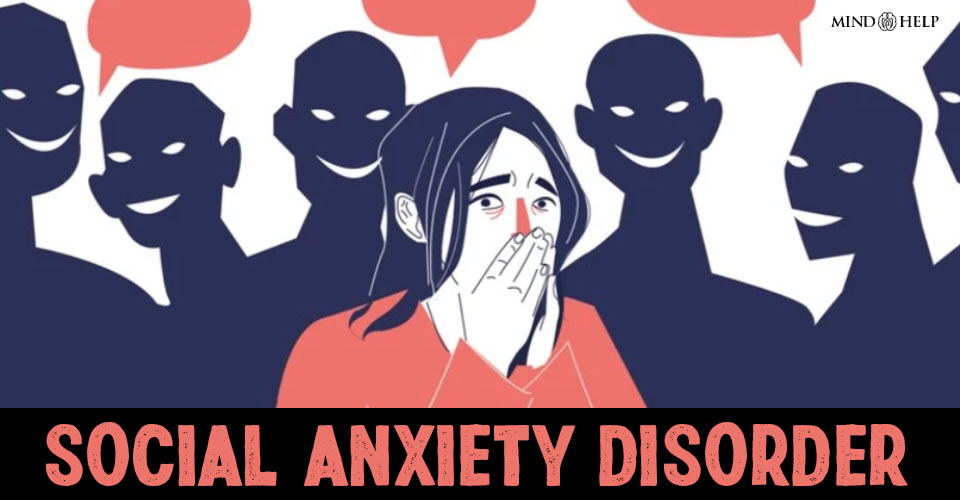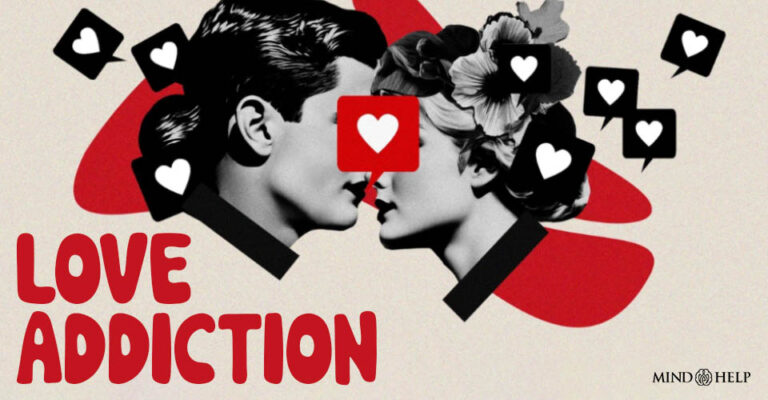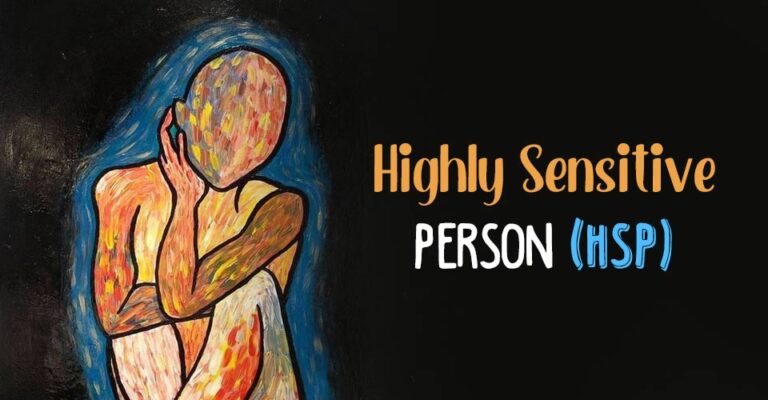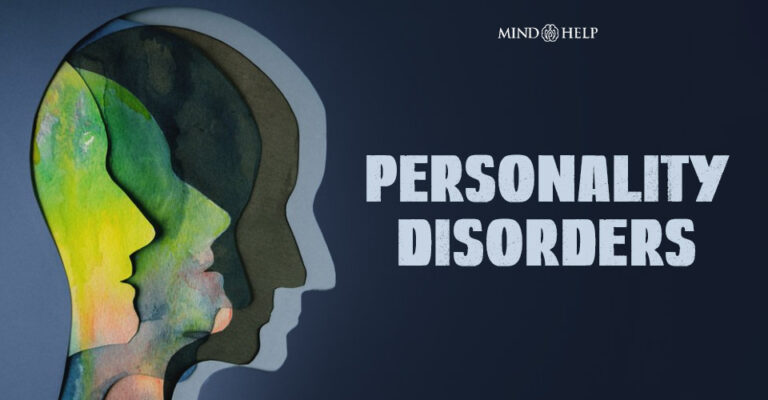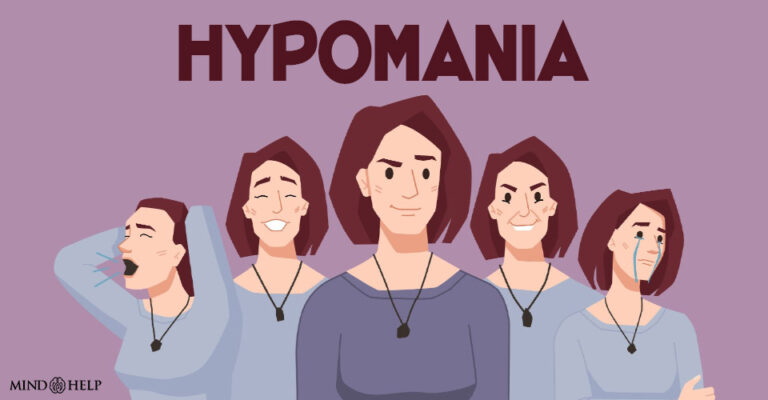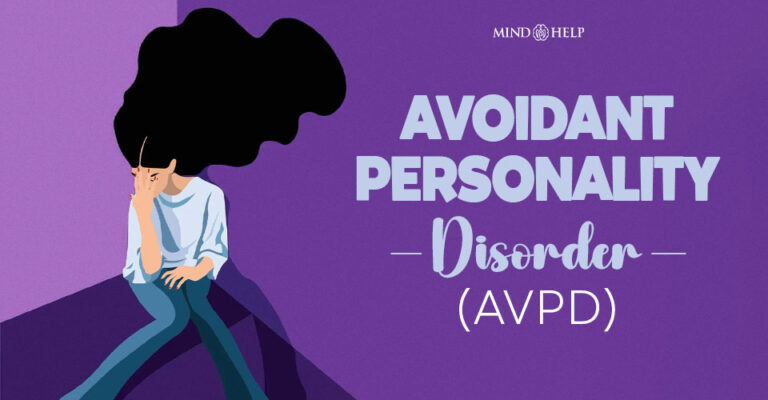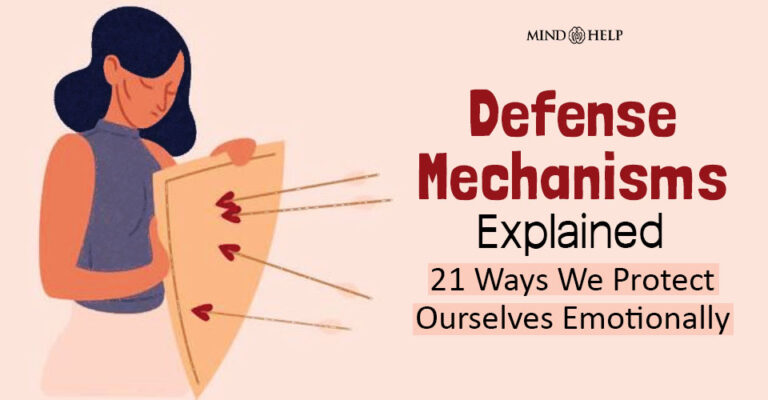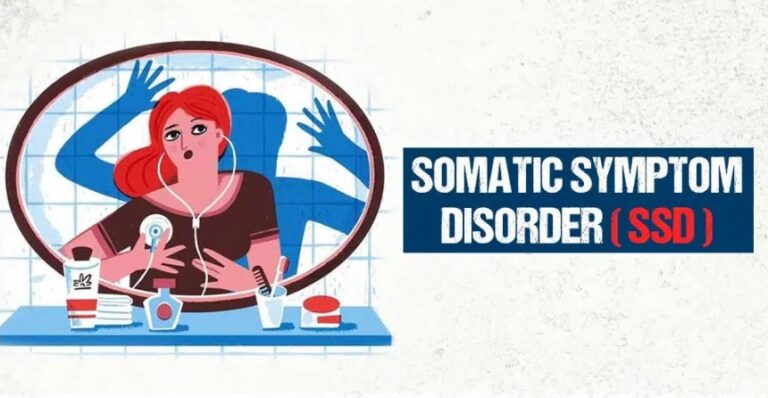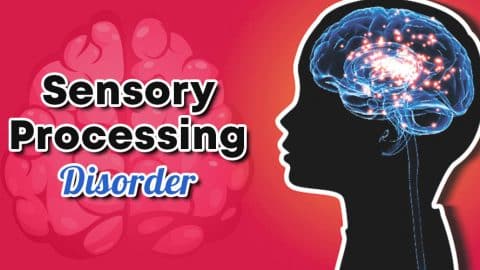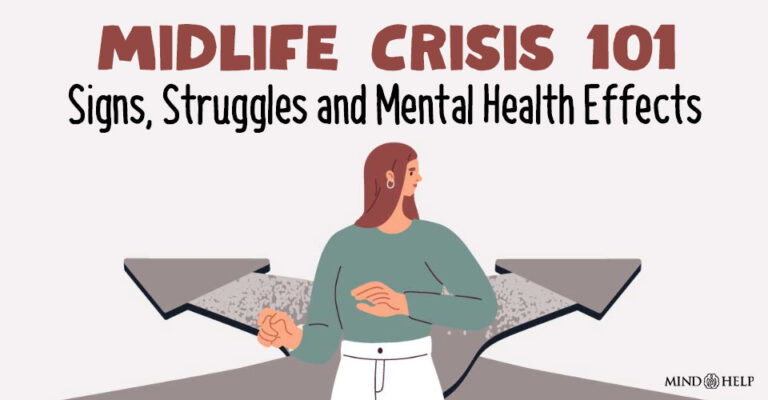Social Anxiety Disorder (SAD), also known as social phobia, is a mental health condition characterized by an intense fear of social situations where a person might be judged, criticized, or humiliated. This fear can be so severe that it interferes with daily activities such as talking to others, attending social gatherings, or even eating in public.
Table of Contents
Key Symptoms:
- Intense fear or anxiety in social situations (e.g., public speaking, meeting new people)
- Avoidance of social interactions or enduring them with extreme distress
- Physical symptoms like sweating, trembling, rapid heartbeat, nausea, or blushing
- Persistent worry for days or weeks before a social event
- Low self-esteem and fear of embarrassment or rejection
Causes:
- Social anxiety can be caused by a combination of:
- Genetics (family history of anxiety disorders)
- Brain structure (overactivity in the amygdala)
- Past negative experiences (bullying, humiliation)
- Environmental and learned behaviors
Treatment Options:
- Cognitive Behavioral Therapy (CBT): the most effective form of therapy
- Exposure therapy: gradually facing feared social situations
- Medications: such as SSRIs (e.g., sertraline) for severe cases
- Mindfulness and relaxation techniques
With the right support and treatment, people with social anxiety disorder can lead fulfilling, confident lives.
What Is Social Anxiety Disorder?
Social anxiety disorder, also known as social phobia, is associated with severe anxiety and fear in social settings, such as public gatherings, meetings, social events, public performances, etc 1 Jefferson J. W. (2001). Social Anxiety Disorder: More Than Just a Little Shyness. Primary care companion to the Journal of clinical psychiatry, 3(1), 4–9. https://doi.org/10.4088/pcc.v03n0102 . People suffering from social phobia are always apprehensive about negative scrutiny and public humiliation.
They may be wary of attending social events, forming new relationships, appearing for a job interview, eating in front of others, etc. Social phobia can manifest itself as anxious and fearful behavior in social settings and can also involve a number of physical and mental symptoms, such as blushing, sweating, and shaking.
People with social anxiety disorder tend to have unrealistic standards for their own social behavior and underestimate their ability to cope with social situations 2 Hofmann, S. G. (2007). Cognitive factors that maintain social anxiety disorder: A comprehensive model and its treatment implications. Cognitive Behaviour Therapy, 36(4), 193-209. https://doi.org/10.1080/16506070701421313 .
People living with social anxiety disorders often resort to “safety behaviors” 3 Evans, R., Chiu, K., Clark, D. M., Waite, P., & Leigh, E. (2021). Safety behaviors in social anxiety: An examination across adolescence. Behavior research and therapy, 144, 103931. https://doi.org/10.1016/j.brat.2021.103931 such as avoiding certain situations or focusing excessive attention on their minute movements in order to deal with the stress. They also have a tendency to ruminate about a single event or interaction and scrutinize every aspect of it.
The worldwide prevalence of social anxiety disorder is 5 to 10% 4 Rose GM, Tadi P. Social Anxiety Disorder. [Updated 2021 Sep 29]. In: StatPearls [Internet]. Treasure Island (FL): StatPearls Publishing; 2022 Jan-. Available from: https://www.ncbi.nlm.nih.gov/books/NBK555890/ and the lifetime prevalence is around 8.4% to 15%. Women are more commonly affected than men.
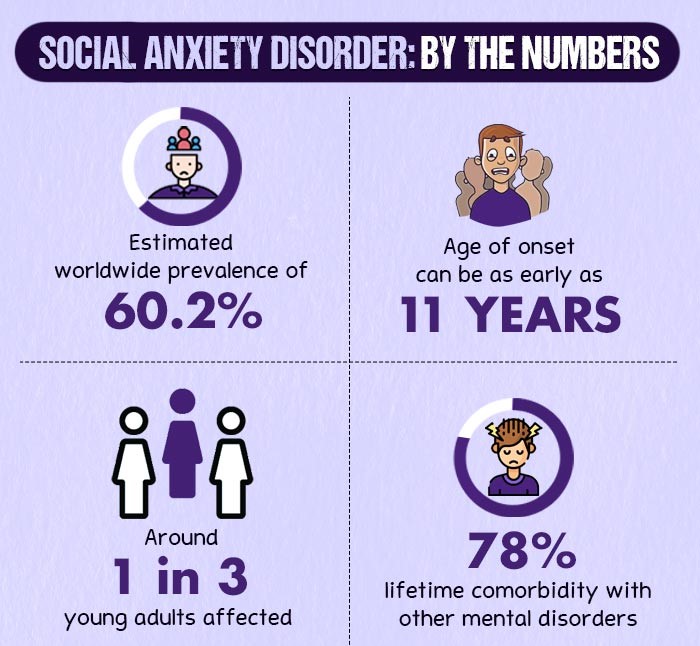
Shyness Vs. Social Anxiety
Social anxiety is often mistaken for shyness, but the two are quite different. While a shy person may feel uneasy in certain social situations, they can typically manage or overcome these feelings with time. In contrast, social anxiety disorder is a more intense and persistent condition that significantly impacts a person’s daily life and overall well-being, often requiring professional intervention for effective management.
Case Example
Jisha, a 28-year-old copywriter, constantly felt like she was under a microscope—convinced that everyone around her was judging her every move. In public, she never went without her trusty baseball cap or hoodie, believing they shielded her from the piercing gaze of strangers.
Since childhood, Jisha had been branded the “shy” girl who struggled to make friends. As an adult, even casual conversations were daunting, and something as simple as maintaining eye contact felt overwhelming.
The mere thought of placing a phone order sent her heart racing. She would often pace for fifteen minutes just to gather the courage to dial. Afterward, she’d replay the conversation endlessly in her head—scrutinizing every word, blaming herself for not sounding more confident.
Her fear of social interaction wasn’t just inconvenient—it was paralyzing. Daily tasks became emotionally exhausting, and her colleagues often misread her quietness as arrogance or disinterest, deepening her guilt and isolation.
In reality, Jisha was living with social anxiety disorder—a debilitating mental health condition that left her feeling trapped in her own mind, struggling with symptoms she couldn’t simply “snap out of.”
Social Anxiety Disorder Symptoms
Social anxiety disorder manifests through a combination of physiological, behavioral, and cognitive symptoms, all reflecting intense fear and anxiety in social situations. These are outlined below:
A. Physiological Symptoms
Social phobia induces a “fight-or-flight” response in its sufferers and this gets manifested in a number of physiological responses 5 Crişan, L. G., Vulturar, R., Miclea, M., & Miu, A. C. (2016). Reactivity to Social Stress in Subclinical Social Anxiety: Emotional Experience, Cognitive Appraisals, Behavior, and Physiology. Frontiers in psychiatry, 7, 5. https://doi.org/10.3389/fpsyt.2016.00005 . These may include:
- Blushing
- Excessive sweating
- Palpitations
- Nausea
- Shaking or trembling
- Breathing problems
- Fainting
- Inability to walk properly
- Crying
- Disjointed speech
B. Behavioral Symptoms
Severe anxiety disorder causes people to be overtly self-conscious in their personal perceptions and assessment. They are burdened by dreads of scrutiny, criticism, judgment, and underperformance in social contexts. Because of this, they may display the following behavioral symptoms 6 National Collaborating Centre for Mental Health (UK). Social Anxiety Disorder: Recognition, Assessment and Treatment. Leicester (UK): British Psychological Society (UK); 2013. (NICE Clinical Guidelines, No. 159.) 2, SOCIAL ANXIETY DISORDER. Available from: https://www.ncbi.nlm.nih.gov/books/NBK327674/ :
- Avoidance behavior (such as avoiding eye contact, physical contact, making conversation, etc.)
- Awkward self-presentation
- Withdrawing from social situations
- Insecure, nervous, and unconfident behavior, etc.
C. Cognitive Symptoms
Social anxiety also involves a number of cognitive symptoms 7 Hofmann S. G. (2007). Cognitive factors that maintain social anxiety disorder: a comprehensive model and its treatment implications. Cognitive behaviour therapy, 36(4), 193–209. https://doi.org/10.1080/16506070701421313 , which include the following:
- Unrealistic social standards
- Inability to select attainable social goals
- Perception of self as a social object
- Anticipation of negative evaluation from others
- Negative interpretations of neutral events
What Causes Social Anxiety Disorder?
Social phobia has been explored through various lenses, including psychiatry, neuroscience, sociology, and cultural studies. Yet, its exact causes remain unclear. However, several risk factors are believed to contribute to the development of social anxiety disorder, as outlined below:
1. Biological Causes
Social anxiety disorder can be a result of genetic causes or dysregulation within the brain.
A. Heredity
Like any other behavioral disorder, social anxiety disorder shows great heritability 8 Lochner, C., Hemmings, S., Seedat, S., Kinnear, C., Schoeman, R., Annerbrink, K., Olsson, M., Eriksson, E., Moolman-Smook, J., Allgulander, C., & Stein, D. J. (2007). Genetics and personality traits in patients with social anxiety disorder: a case-control study in South Africa. European neuropsychopharmacology : the journal of the European College of Neuropsychopharmacology, 17(5), 321–327. https://doi.org/10.1016/j.euroneuro.2006.06.010 . Research 9 Stein, M. B., Chen, C. Y., Jain, S., Jensen, K. P., He, F., Heeringa, S. G., Kessler, R. C., Maihofer, A., Nock, M. K., Ripke, S., Sun, X., Thomas, M. L., Ursano, R. J., Smoller, J. W., Gelernter, J., & Army STARRS Collaborators (2017). Genetic risk variants for social anxiety. American journal of medical genetics. Part B, Neuropsychiatric genetics : the official publication of the International Society of Psychiatric Genetics, 174(2), 120–131. https://doi.org/10.1002/ajmg.b.32520 suggests that a person is at a two- or three-fold greater risk of having social anxiety disorder if a first-degree relative already has it.
B. Brain chemistry
Research 10 Fink, M., Akimova, E., Spindelegger, C., Hahn, A., Lanzenberger, R., & Kasper, S. (2009). Social anxiety disorder: epidemiology, biology and treatment. Psychiatria Danubina, 21(4), 533–542. has attributed the pathological causes of social phobia to neurotransmitters (such as dopamine, glutamate, serotonin) and increased activity in the limbic regions of the brain.
A 2007 meta-analysis 11 Etkin, A., & Wager, T. D. (2007). Functional neuroimaging of anxiety: a meta-analysis of emotional processing in PTSD, social anxiety disorder, and specific phobia. The American journal of psychiatry, 164(10), 1476–1488. https://doi.org/10.1176/appi.ajp.2007.07030504 suggests that individuals with a social anxiety disorder may have hyperactivation in the amygdala, the dorsal anterior cingulate, and insula areas—which are frequently associated with fear and negative emotional processing.
2. Psychosocial Causes
There are several psychosocial 12 Hudson, J. L., & Rapee, R. M. (2000). The Origins of Social Phobia. Behavior Modification, 24(1), 102–129. https://doi.org/10.1177/0145445500241006 and developmental risk factors that may make a person more prone to social phobia. A 2007 study 13 Hofmann S. G. (2007). Cognitive factors that maintain social anxiety disorder: a comprehensive model and its treatment implications. Cognitive behavior therapy, 36(4), 193–209. https://doi.org/10.1080/16506070701421313 states that people who are inclined to inhibited shyness, unexpected bursts of emotions, lack of internal control, avoidant behavior, and interpersonal sensitivity are more susceptible to social anxiety.
Some other factors that might play a role in the development of social phobia are:
A. Temperament
Temperament 14 Rettew, D. C., & McKee, L. (2005). Temperament and its role in developmental psychopathology. Harvard review of psychiatry, 13(1), 14–27. https://doi.org/10.1080/10673220590923146 is the early occurrence of traits or range of characteristics that go on to form a personality. Temperament research suggests that people who had a higher level of behavioral inhibition (BI) as children are more likely to eventually develop social phobia.
B. Childhood environment
A child’s exposure to social situations plays a critical role in shaping their social confidence. Limited interaction can hinder the development of essential social skills, increasing the risk of social anxiety later in life. Additionally, growing up around caregivers or family members who exhibit socially anxious behaviors can lead children to model and internalize similar patterns.
C. Parenting style
It has been seen that overprotection on the part of a parent can lead to social withdrawal in children. This can often develop into a social anxiety disorder. “Helicopter parenting” 15 Srivastav, D., & Mathur, M. L. (2020). Helicopter Parenting and Adolescent Development: From the Perspective of Mental Health. In L. Benedetto, & M. Ingrassia (Eds.), Parenting – Studies by an Ecocultural and Transactional Perspective. IntechOpen. https://doi.org/10.5772/intechopen.93155 , a kind of parenting that involves a high level of involvement on the part of the parents, has also been found to be associated with social anxiety.
D. Traumatic experiences
First-hand negative social experiences involving public criticism and humiliation are potential triggers for social phobia. Some experiences that can lead to its onset include:
- Bullying and harassment
- Peer and parental pressure on children and adolescents 16 Khalid-Khan, S., Santibanez, M. P., McMicken, C., & Rynn, M. A. (2007). Social anxiety disorder in children and adolescents: epidemiology, diagnosis, and treatment. Paediatric drugs, 9(4), 227–237. https://doi.org/10.2165/00148581-200709040-00004
- Emotional abuse involves intimidation, gaslighting, competitive berating, negative appraisal, etc.
Diagnosing Social Anxiety Disorder
According to the Diagnostic and Statistical Manual of Mental Disorders (DSM) 5, social anxiety disorder can be diagnosed 17 Substance Abuse and Mental Health Services Administration. DSM-5 Changes: Implications for Child Serious Emotional Disturbance [Internet]. Rockville (MD): Substance Abuse and Mental Health Services Administration (US); 2016 Jun. Table 16, DSM-IV to DSM-5 Social Phobia/Social Anxiety Disorder Comparison. Available from: https://www.ncbi.nlm.nih.gov/books/NBK519712/table/ch3.t12/ if a person has been experiencing debilitating fear in one or more social situations where they are exposed to “possible scrutiny” by other people, for a period of more than 6 months. The fear experienced should be out of proportion to the threat.
Mental health practitioners may examine self-reported data, patient history, symptoms, and other behavioral patterns 18 Liebowitz M. R. (1999). Update on the diagnosis and treatment of social anxiety disorder. The Journal of clinical psychiatry, 60 Suppl 18, 22–26. to arrive at a definite diagnosis. Certain assessments may also be used 19 Rose GM, Tadi P. Social Anxiety Disorder. [Updated 2021 Sep 29]. In: StatPearls [Internet]. Treasure Island (FL): StatPearls Publishing; 2022 Jan-. Available from: https://www.ncbi.nlm.nih.gov/books/NBK555890/ for the diagnosis of social anxiety disorder such as:
- Social Phobia Inventory (SPIN)
- Liebowitz Social Anxiety Scale (LSAS)
- Liebowitz Self-Rated Disability Scale
- Brief Social Phobia Scale (BSPS)
- Social Phobia Safety Behaviors Scale
- Self Statements During Public Speaking Scale, etc.
Social Anxiety Disorder Treatment
Treatments for social anxiety disorder can include therapy or medication. Some of the most common treatment approaches are mentioned below:
1. Psychotherapy
Studies have found various psychotherapy treatment approaches to be effective for social anxiety disorder. Some of them have been elaborated on below.
I. Cognitive behavioral therapy (CBT)
Cognitive behavioral therapy (CBT) is currently considered the “gold standard” 20 Goldin, P. R., Ziv, M., Jazaieri, H., Hahn, K., Heimberg, R., & Gross, J. J. (2013). Impact of cognitive behavioral therapy for social anxiety disorder on the neural dynamics of cognitive reappraisal of negative self-beliefs: randomized clinical trial. JAMA psychiatry, 70(10), 1048–1056. https://doi.org/10.1001/jamapsychiatry.2013.234 psychological treatment approach for social phobia. Studies 21 Hofmann, S. G., & Scepkowski, L. A. (2006). Social Self-Reappraisal Therapy for Social Phobia: Preliminary Findings. Journal of cognitive psychotherapy, 20(1), 45–57. https://doi.org/10.1891/jcop.20.1.45 show that CBT induces healthy self-focused attention and self-perception, and leads to reduction 22 Behera, N., Samantaray, N. N., Kar, N., Nayak, M. R., & Chaudhury, S. (2020). Effectiveness of cognitive behavioral therapy on social anxiety disorder: A comparative study. Industrial psychiatry journal, 29(1), 76–81. https://doi.org/10.4103/ipj.ipj_2_20 of social withdrawal symptoms 23 Tsitsas, G. D., & Paschali, A. A. (2014). A Cognitive-Behavior Therapy Applied to a Social Anxiety Disorder and a Specific Phobia, Case Study. Health psychology research, 2(3), 1603. https://doi.org/10.4081/hpr.2014.1603 .
About 56% to 95% of patients suffering from social anxiety disorder find respite by CBT 24 Pinjarkar, R. G., Sudhir, P. M., & Math, S. B. (2015). Brief cognitive behavior therapy in patients with social anxiety disorder: a preliminary investigation. Indian journal of psychological medicine, 37(1), 20–25. https://doi.org/10.4103/0253-7176.150808 .
Read More About CBT Here
II. Group psychotherapy
Group psychotherapy 25 Barkowski, S., Schwartze, D., Strauss, B., Burlingame, G. M., Barth, J., & Rosendahl, J. (2016). Efficacy of group psychotherapy for social anxiety disorder: A meta-analysis of randomized-controlled trials. Journal of anxiety disorders, 39, 44–64. https://doi.org/10.1016/j.janxdis.2016.02.005 has been proven to be quite effective for treating social anxiety disorder. In fact, cognitive behavioral group therapy for social phobia (CBGT) is the most validated approach to treating severe social phobia.
It is both an educational and supportive therapy. It enhances social skills while also addressing problems faced in socialization. Social self-appraisal therapy is another form of group therapy that focuses on addressing issues 26 Farmer, A. S., & Kashdan, T. B. (2012). Social anxiety and emotion regulation in daily life: spillover effects on positive and negative social events. Cognitive behaviour therapy, 41(2), 152–162. https://doi.org/10.1080/16506073.2012.666561 of social skills and self-perceptions via discussions, video feedback, audio feedback, mirror exposure,etc. .
III. Acceptance and commitment therapy (ACT)
Acceptance and commitment therapy (ACT) 27 Goldin, P. R., Morrison, A. S., Jazaieri, H., Heimberg, R. G., & Gross, J. J. (2017). Trajectories of social anxiety, cognitive reappraisal, and mindfulness during an RCT of CBGT versus MBSR for social anxiety disorder. Behaviour research and therapy, 97, 1–13. https://doi.org/10.1016/j.brat.2017.06.001 enables people to practice self-acceptance and meaningful communication 28 Dalrymple, K. L., Morgan, T. A., Lipschitz, J. M., Martinez, J. H., Tepe, E., & Zimmerman, M. (2014). An Integrated, Acceptance-Based Behavioral Approach for Depression With Social Anxiety: Preliminary Results. Behavior modification, 38(4), 516–548. https://doi.org/10.1177/0145445513518422 . In a 2014 study 29 Niles, A. N., Burklund, L. J., Arch, J. J., Lieberman, M. D., Saxbe, D., & Craske, M. G. (2014). Cognitive mediators of treatment for social anxiety disorder: comparing acceptance and commitment therapy and cognitive-behavioral therapy. Behavior therapy, 45(5), 664–677. https://doi.org/10.1016/j.beth.2014.04.006 , it was found that ACT predicted better outcomes post-treatment in over 39% of patients suffering from social anxiety disorder.
2. Medication
Selective serotonin reuptake inhibitors (SSRIs) 30 Chu A, Wadhwa R. Selective Serotonin Reuptake Inhibitors. [Updated 2021 May 10]. In: StatPearls [Internet]. Treasure Island (FL): StatPearls Publishing; 2022 Jan-. Available from: https://www.ncbi.nlm.nih.gov/books/NBK554406/ , a second-generation antidepressant 31 Hansen, R. A., Gaynes, B. N., Gartlehner, G., Moore, C. G., Tiwari, R., & Lohr, K. N. (2008). Efficacy and tolerability of second-generation antidepressants in social anxiety disorder. International clinical psychopharmacology, 23(3), 170–179. https://doi.org/10.1097/YIC.0b013e3282f4224a is the most preferred form of medical treatment for social anxiety disorder 32 Hjorth, O. R., Frick, A., Gingnell, M., Hoppe, J. M., Faria, V., Hultberg, S., Alaie, I., Månsson, K., Rosén, J., Reis, M., Wahlstedt, K., Jonasson, M., Lubberink, M., Antoni, G., Fredrikson, M., & Furmark, T. (2021). Expectancy effects on serotonin and dopamine transporters during SSRI treatment of social anxiety disorder: a randomized clinical trial. Translational psychiatry, 11(1), 559. https://doi.org/10.1038/s41398-021-01682-3 . Some commonly used SSRIs are:
- Paroxetine 33 Book, S. W., Thomas, S. E., Randall, P. K., & Randall, C. L. (2008). Paroxetine reduces social anxiety in individuals with a co-occurring alcohol use disorder. Journal of anxiety disorders, 22(2), 310–318. https://doi.org/10.1016/j.janxdis.2007.03.001
- Sertraline
- Escitalopram 34 Pallanti, S., & Quercioli, L. (2006). Resistant social anxiety disorder response to Escitalopram. Clinical practice and epidemiology in mental health : CP & EMH, 2, 35. https://doi.org/10.1186/1745-0179-2-35
- Venlafaxine XR
- Fluvoxamine CR (luvox CR) 35 Irons J. (2005). Fluvoxamine in the treatment of anxiety disorders. Neuropsychiatric disease and treatment, 1(4), 289–299. .
Research 36 Cassano, G. B., Baldini Rossi, N., & Pini, S. (2002). Psychopharmacology of anxiety disorders. Dialogues in clinical neuroscience, 4(3), 271–285. https://doi.org/10.31887/DCNS.2002.4.3/gcassano shows that SSRIs help reduce general anxiety 37 Williams, T., Hattingh, C. J., Kariuki, C. M., Tromp, S. A., van Balkom, A. J., Ipser, J. C., & Stein, D. J. (2017). Pharmacotherapy for social anxiety disorder (SAnD). The Cochrane database of systematic reviews, 10(10), CD001206. https://doi.org/10.1002/14651858.CD001206.pub3 , hostility, and frenzied behavior.
In most cases, a combination of psychotherapy and SSRIs is used to treat severe social anxiety.
Myths About Social Anxiety
Social anxiety disorder is an underdiagnosed anxiety disorder, a fact that can be attributed to the misunderstanding surrounding it. Some of the myths regarding social phobia have been countered below.
1. Social anxiety is same as introversion
Social anxiety disorder is often mistaken for shyness or introversion. However, it’s important to recognize the difference: introversion is a normal and healthy personality trait characterized by a preference for solitude or quiet settings, whereas social anxiety disorder involves intense fear and distress in social situations that can interfere with daily functioning and typically requires professional treatment.
2. Social phobia is the same as other phobias
Social anxiety disorder, though synonymously termed as “social phobia”, should be differentiated from specific phobias like claustrophobia, hydrophobia, and the like. According to a 2003 study 38 Schneier F. R. (2003). Social anxiety disorder. BMJ (Clinical research ed.), 327(7414), 515–516. https://doi.org/10.1136/bmj.327.7414.515 , social phobia is different from other phobic disorders by the characteristic age of onset in the mid-teens and greater ratio of women to men.
3. Social phobia and anxiety disorders are same
The Diagnostic and Statistical Manual of Mental Disorders (DSM-IV) prescribes specific criteria for the diagnosis of social anxiety disorder 39 Substance Abuse and Mental Health Services Administration. DSM-5 Changes: Implications for Child Serious Emotional Disturbance [Internet]. Rockville (MD): Substance Abuse and Mental Health Services Administration (US); 2016 Jun. Table 16, DSM-IV to DSM-5 Social Phobia/Social Anxiety Disorder Comparison. Available from: https://www.ncbi.nlm.nih.gov/books/NBK519712/table/ch3.t12/ which is different from other disorders, such as generalized anxiety disorder. [Read more]
Social phobia may sometimes manifest in a panic attack, which is a key symptom of panic disorders 40 Cackovic C, Nazir S, Marwaha R. Panic Disorder. [Updated 2021 Jul 10]. In: StatPearls [Internet]. Treasure Island (FL): StatPearls Publishing; 2022 Jan-. Available from: https://www.ncbi.nlm.nih.gov/books/NBK430973/ . However, symptoms of social phobia can be differentiated by their confinement to situational encounters 41 Potter, C. M., Wong, J., Heimberg, R. G., Blanco, C., Liu, S. M., Wang, S., & Schneier, F. R. (2014). Situational panic attacks in social anxiety disorder. Journal of affective disorders, 167, 1–7. https://doi.org/10.1016/j.jad.2014.05.044 .
Read More About Panic Disorder Here
4. The “fear” in social anxiety is very common
The most common symptom of social anxiety disorder is extreme and persistent fear of embarrassment and humiliation while participating in social activities. And, this fear in social anxiety is very distinct.
This fear 42 Westenberg H. G. (1998). The nature of social anxiety disorder. The Journal of clinical psychiatry, 59 Suppl 17, 20–26. often results in self-defeating thoughts, ambiguous actions, cognitive distortions, and awkward self-presentation. One must be careful that this fear is not the effect of substance abuse or a different medical or psychological condition.
Coping Tips
Everyday life can be quite exhausting if you have social anxiety. It can often lead to other mental disorders such as depression and greatly affect your well-being.
Some self-help strategies for social anxiety that can go hand-in-hand with professional treatment have been mentioned below.
- Recognize your symptoms and triggers
- Practice mindfulness
- Try participating in small support groups, like clubs, travel groups, etc.
- Practice small-scale networking to broaden social horizons at a healthy and acceptable pace
- Engage in stress management techniques, such as yoga 43 Hofmann, S. G., Curtiss, J., Khalsa, S., Hoge, E., Rosenfield, D., Bui, E., Keshaviah, A., & Simon, N. (2015). Yoga for generalized anxiety disorder: design of a randomized controlled clinical trial. Contemporary clinical trials, 44, 70–76. https://doi.org/10.1016/j.cct.2015.08.003 , meditation 44 Goldin, P., Ramel, W., & Gross, J. (2009). Mindfulness Meditation Training and Self-Referential Processing in Social Anxiety Disorder: Behavioral and Neural Effects. Journal of cognitive psychotherapy, 23(3), 242–257. https://doi.org/10.1891/0889-8391.23.3.242 , deep breathing exercises, muscle relaxation techniques, 45 Goldin, P. R., & Gross, J. J. (2010). Effects of mindfulness-based stress reduction (MBSR) on emotion regulation in social anxiety disorder. Emotion (Washington, D.C.), 10(1), 83–91. https://doi.org/10.1037/a0018441 , etc.
- Indulge in leisure activities like journaling, taking long walks, making art, 46 Abbing, A., Ponstein, A., van Hooren, S., de Sonneville, L., Swaab, H., & Baars, E. (2018). The effectiveness of art therapy for anxiety in adults: A systematic review of randomised and non-randomised controlled trials. PloS one, 13(12), e0208716. https://doi.org/10.1371/journal.pone.0208716 or doing any other hobbies that may give you pleasure.
- Be patient with yourself throughout the process of recovery.
Takeaway
Social phobia is one of the most common yet frequently underdiagnosed anxiety disorders. Left untreated, it can significantly disrupt your quality of life, affecting your career, relationships, and overall well-being. However, with early diagnosis and the right combination of therapy, medication, and self-help strategies, social anxiety disorder can be effectively managed—and even overcome.
At A Glance
- Social anxiety or social phobia is the fear linked to being in social settings.
- Its causes can range from genetic to psychological, biological, and socio-cultural factors.
- Severe social anxiety manifests in negative emotions, avoidance and safety behaviors, disjointed speech, etc.
- The symptoms of social anxiety involve blushing, palpitation, excessive sweating, breathing problems, fainting, etc.
- If untreated, social phobia can lead to a number of severe physical and mental health conditions.
- Social anxiety disorder also has negative effects on a person’s quality of life, reputation, career, and relationships.
- The treatment for social anxiety includes both psychotherapies and medication.
- Social phobia can be managed better with healthy coping strategies.
Frequently Answered Questions (FAQs)
1. Is social anxiety a mental illness?
Social anxiety disorder is a form of anxiety disorder that leads to severe distress and anxiety in social situations. It is considered to be a mental disorder.
2. Do I have social anxiety?
If you dread social interaction and are afraid of public humiliation, embarrassment, etc. to a point where it significantly affects your wellbeing, you might have social phobia. However, this is very different from shyness or having an introverted personality. For an accurate assessment and diagnosis, it is advised that you consult a mental health professional.
3. What does it mean to have social anxiety?
A person has social anxiety if they fear social interaction or social events. A social context triggers social phobia, resulting in symptoms such as blushing, sweating, breathing problems, fainting, etc.
4. Can social anxiety be cured?
Social phobia is a very common anxiety disorder that can be easily treated with the help of therapy and/or medication. It can also be managed with the help of certain healthy coping techniques.
5. How do we help someone with social anxiety?
The key to helping someone deal with social anxiety involves free communication, patience, and understanding. Focus on their feelings and body language and listen patiently. Try distraction techniques (such as laughter, games & discussing hobbies) to ease their social stress. Most importantly, encourage them to seek help.
6. How to overcome social anxiety disorder naturally?
Some natural remedies for social anxiety disorder include yoga, meditation 47 Lemay, V., Hoolahan, J., & Buchanan, A. (2019). Impact of a Yoga and Meditation Intervention on Students’ Stress and Anxiety Levels. American Journal of Pharmaceutical Education, 83(5), 7001. https://doi.org/10.5688/ajpe7001 , and exercise 48 Aylett, E., Small, N. & Bower, P. Exercise in the treatment of clinical anxiety in general practice – a systematic review and meta-analysis. BMC Health Serv Res 18, 559 (2018). https://doi.org/10.1186/s12913-018-3313-5 among other techniques.
7. What are the most common social phobias?
Studies have identified two main types of social phobia: the speaking-only phobia, which is characterized by a fear of public speaking, and the complex social phobia, characterized by a fear of multiple social situations 49 Stein, M. B., & Chavira, D. A. (1998). Subtypes of social phobia and comorbidity with depression and other anxiety disorders. Journal of affective disorders, 50 Suppl 1, S11–S16. https://doi.org/10.1016/s0165-0327(98)00092-5 .
8. How is social anxiety disorder different from other anxiety disorders?
Social anxiety disorder is different from other anxiety disorders as it specifically involves a fear of social situations.
9. How can you prevent social anxiety disorder?
Since social anxiety disorder usually begins in childhood, prevention techniques are focused around improving the developmental environment, such as the home and school. Certain measures to prevent peer victimization in schools have been proven to be effective in combating the risk of developing social anxiety 50 La Greca, A. M., Ehrenreich-May, J., Mufson, L., & Chan, S. (2016). Preventing Adolescent Social Anxiety and Depression and Reducing Peer Victimization: Intervention Development and Open Trial. Child & youth care forum, 45(6), 905–926. https://doi.org/10.1007/s10566-016-9363-0 .
10. Is social anxiety disorder more common in poor people?
Social anxiety disorder has been found to have a significant association with a lower socioeconomic status. 51 Schneier, F. R., Johnson, J., Hornig, C. D., Liebowitz, M. R., & Weissman, M. M. (1992). Social phobia. Comorbidity and morbidity in an epidemiologic sample. Archives of general psychiatry, 49(4), 282–288. https://doi.org/10.1001/archpsyc.1992.01820040034004
